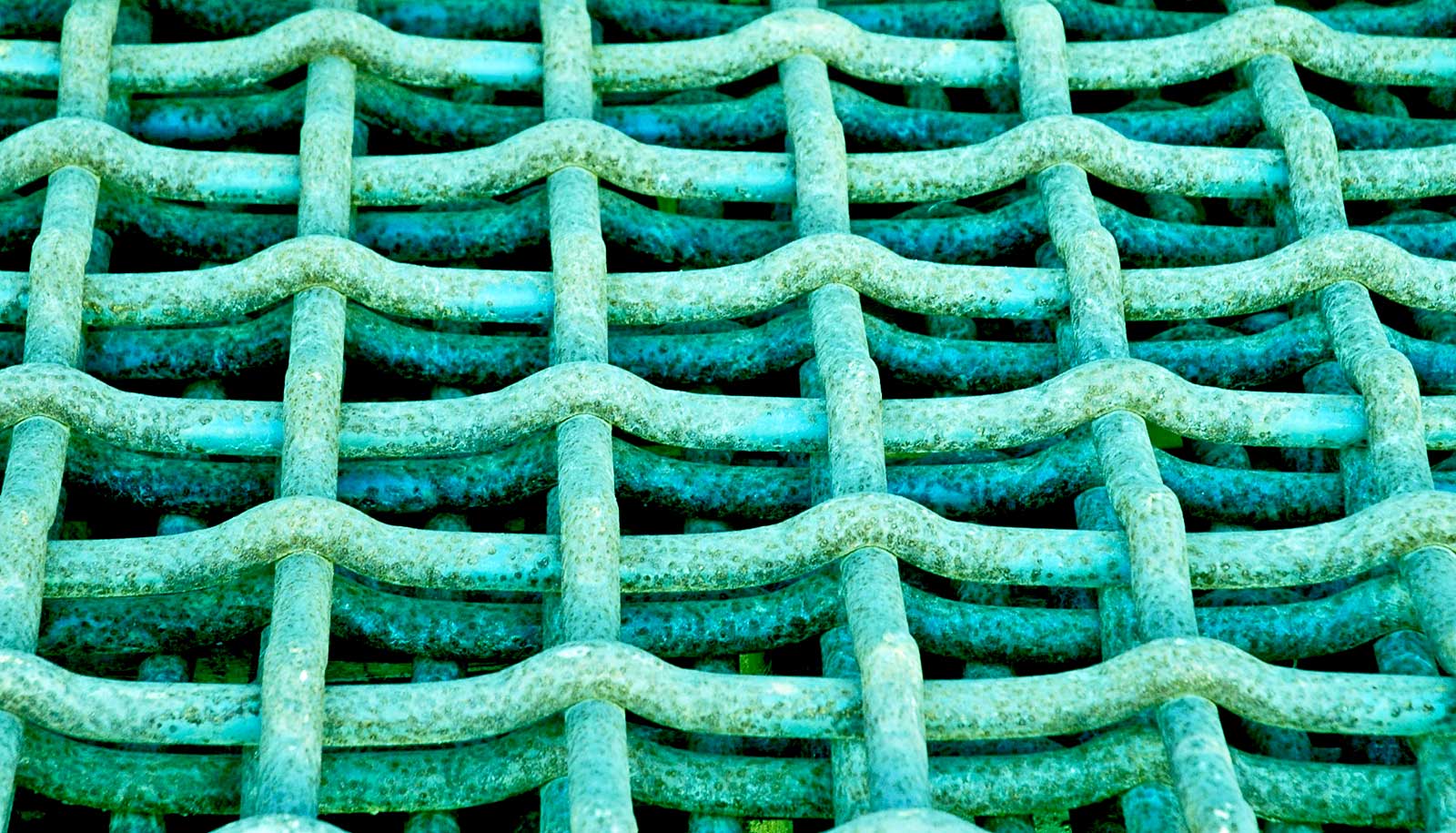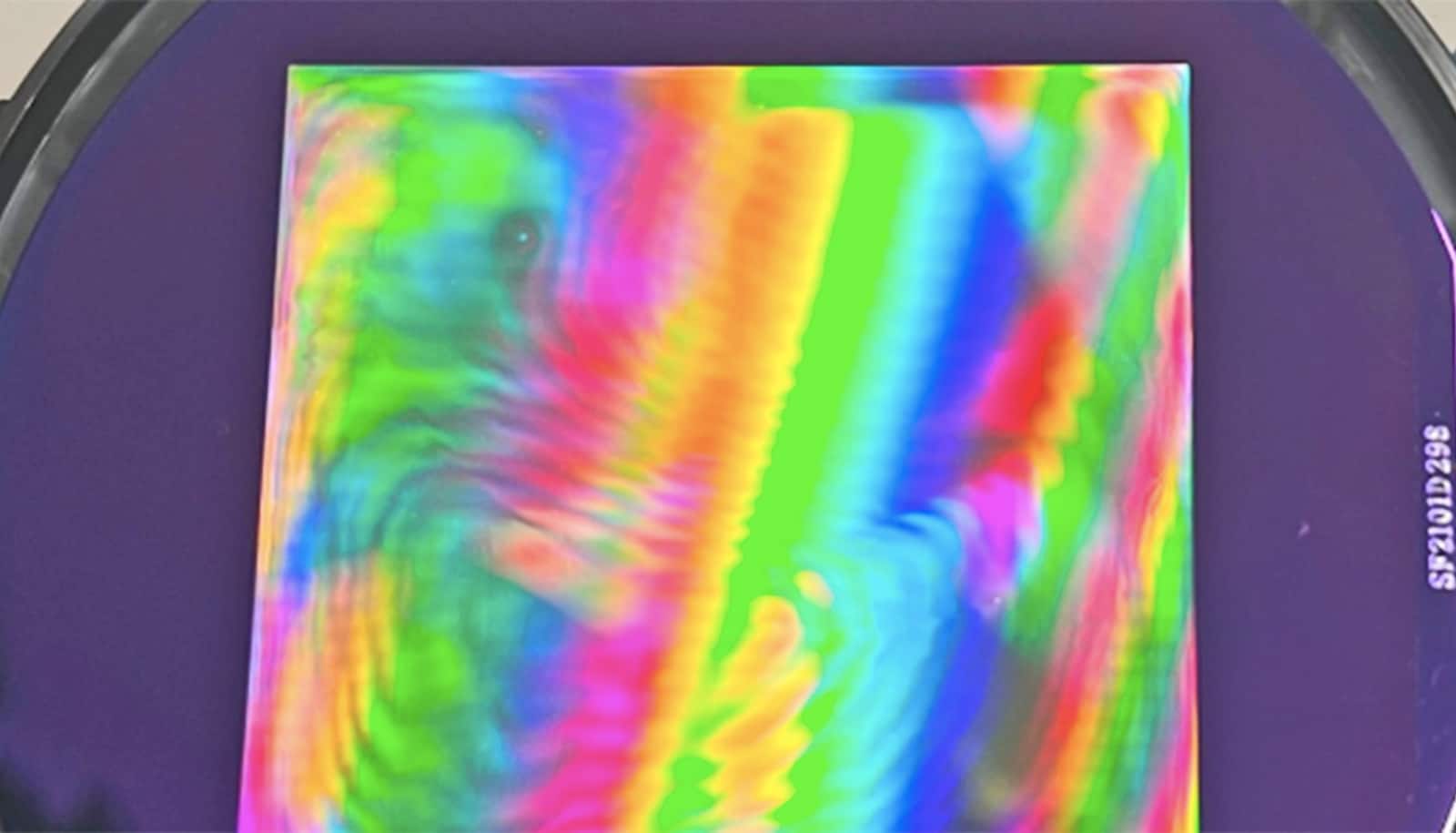Researchers have found that fracture-resistant “rebar graphene” is more than twice as tough as pristine graphene.
Graphene is a one-atom-thick sheet of carbon. On the two-dimensional scale, the material is stronger than steel, but because graphene is so thin, it is still subject to ripping and tearing.
Rebar graphene is the nanoscale analog of rebar (reinforcement bars) in concrete, in which embedded steel bars enhance the material’s strength and durability. Rebar graphene, developed in chemist James Tour’s lab in 2014, uses carbon nanotubes for reinforcement.
In a new study in ACS Nano, materials science researchers, including Tour, stress-tested rebar graphene and found that nanotube rebar diverted and bridged cracks that would otherwise propagate in unreinforced graphene.
The experiments showed that nanotubes help graphene stay stretchy and also reduce the effects of cracks. That could be useful not only for flexible electronics but also electrically active wearables or other devices where stress tolerance, flexibility, transparency and mechanical stability are desired, says Jun Lou, a professor of materials science and nanoengineering at Rice.
Both the lab’s mechanical tests and molecular dynamics simulations by collaborators at Brown University revealed the material’s toughness.
Graphene’s excellent conductivity makes it a strong candidate for devices, but its brittle nature is a downside, Lou says. His lab reported two years ago that graphene is only as strong as its weakest link. Those tests showed the strength of pristine graphene to be “substantially lower” than its reported intrinsic strength. In a later study, the lab found molybdenum diselenide, another two-dimensional material of interest to researchers, is also brittle.
Tour approached Lou and his group to carry out similar tests on rebar graphene, made by spin-coating single-walled nanotubes onto a copper substrate and growing graphene atop them via chemical vapor deposition.
To stress-test rebar graphene, the researchers had to pull it to pieces and measure the force that was applied. Through trial and error, the lab developed a way to cut microscopic pieces of the material and mount it on a testbed for use with scanning electron and transmission electron microscopes.
Absurdly thin magnets could store way more data
“We couldn’t use glue, so we had to understand the intermolecular forces between the material and our testing devices,” says lead author Emily Hacopian, a graduate student. “With materials this fragile, it’s really difficult.”
Rebar didn’t keep graphene from ultimate failure, but the nanotubes slowed the process by forcing cracks to zig and zag as they propagated. When the force was too weak to completely break the graphene, nanotubes effectively bridged cracks and in some cases preserved the material’s conductivity.
In earlier tests, Lou’s lab showed graphene has a native fracture toughness of 4 megapascals. In contrast, rebar graphene has an average toughness of 10.7 megapascals, he says.
Study coauthor Huajian Gao and his team at Brown confirmed results from the physical experiments through simulations. Gao’s team found the same effects in simulations with orderly rows of rebar in graphene as those measured in the physical samples with rebar pointing every which way.
“The simulations are important because they let us see the process on a time scale that isn’t available to us with microscopy techniques, which only give us snapshots,” Lou says.
He says the rebar graphene results are a first step toward the characterization of many new materials. “We hope this opens a direction people can pursue to engineer 2D material features for applications,” Lou says.
New method prints thin, flexible metals like a newspaper
Additional coauthors are from Rice, the University of Maine, Brown University, Zhengzhou University, and Peking University.
The Welch Foundation, the Air Force Office of Scientific Research’s Multidisciplinary University Research Institute, the Department of Energy Office of Basic Energy Sciences, the National Natural Science Foundation of China, and the National Science Foundation supported the research.
Source: Rice University



